I am trying to understand the frequency response curve of various types of filters (Butterworth, Chebyshev etc).
The curves are shown here for reference :

One thing I do not understand is what do the ripples in passband show.
The curve is clearly Gain vs Frequency. So all the ripples show is that the gain of filter varies slightly with the frequencies in the passband. How is that suppose to create a problem ? We will only get an output which is varying in amplitude. It would have created a problem had we been getting a distorted output, which was possible only when the filters introduced a distortion, and I dont think it has anything to do with gain at different frequencies.
Based on above assumption, why would one not simply opt for a filter with steepest rolloff (elliptic in the figure) , without worrying about the ripples in passband ?
Edit :
It seems I am not able to properly express my doubt. Here is another attempt :
Many articles on filter design mention "Butterworth response is maximally flat, while others like Chebyshev and elliptic have ripples". My query is what has this "maximally flatness " or presence / absence of ripples anything to do (if at all) with the purity of applied signal. Purity in the sense, I apply a signal of a particular frequency, and I get an exact replica back. Will the situation be different in case of different filter types, ie , will I get some spread out or mis-shaped waveform if the filter response has ripples?
If that is the case, then how can this be inferred from the frequency response curve alone , because frequency response curves only show that the gain of the filter varies with frequency ; they dont speak anything about what the shape of wave will become if the curve has ripples or not.
My doubt arises because the texts generally differentiate between various filter responses by citing something like "Chebyshev response differs from butterworth because it has ripples in the passband".
Additionally, if all of the above is not true, ie ripples bear no relation to altering the shape of input, then what do they signify ? ( One of the users made and attempt at that. If possible, please extend or elaborate a little)
I am talking of only a simple situation with just one input (let alone many inputs). Maybe someone is kind enough to point me to some resources which show response of these filters to a single sine input.
Thank You
